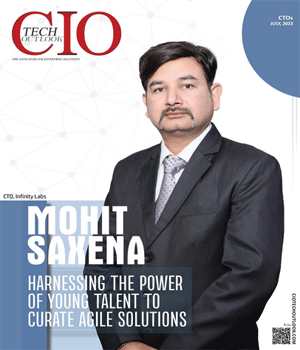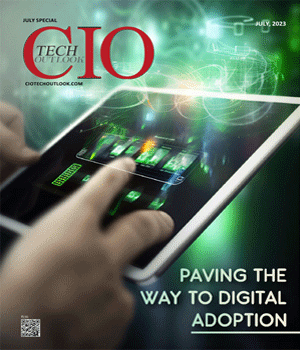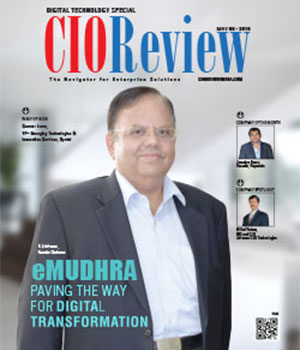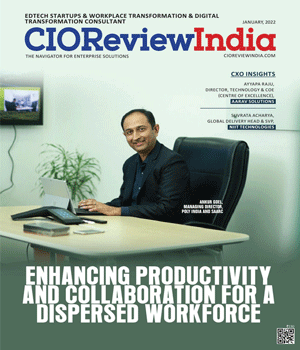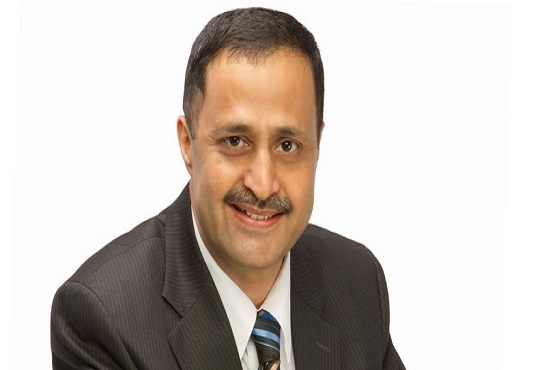
Voice Technology Making Contactless World a Reality
Janifha Evangeline | Thursday, 17 June 2021, 17:22 IST

In recent years, Voice technology has been gaining immense popularity among internet and smartphone users. The technology is being implemented right from smart speakers at homes to voice control in cars. COVID-19 pandemic has been a catalyst skyrocketing voice technology’s prominence and its adoption grew rapidly owing to its contactless appeal. And now most brands are realizing that consumers aren’t willing to give up the convenience voice technology offers moving forward.
Organizations should think of developing and deploying a conversational-first strategy to create deeper relationships with customers as users/consumers continue to expect the ease and convenience of voice-enabled interactions. Furthermore, Digital voice technology can facilitate organizations in bridging the gap between their products and services, specifically to their most important consumers. But in order to build a successful digital voice strategy, organizations need to first understand what digital voice is, and how can it be used to their advantage.
Around sixty-one percent of adults use voice technology and voice assistants for tasks such as online shopping. However, organizations can also go beyond the voice assistants built into smart speakers. They can create a unique voice, which speaks to the company’s brand and differentiates them apart from the uniform sound of an assistant’s voice.
Building brand recognition
Seamless experience across the consumer journey can be built and brand recognition can be increased by deploying custom digital voices across different devices and touchpoints. Consumers trust a brand more and develop an emotional connection when they hear the same voice – no matter the device or platform. And this is key for brands as voice technology continues to grow.
Furthermore, to optimize digital voices, organizations are required to choose the right voice partner. Therefore, organizations should choose a partner, which not only guarantees data privacy and commits to quality assurance but should also use the most effective technology that is available. This can help the organization in creating the best experiences possible for consumers while guaranteeing their privacy.
Next-gen digital voice
As consumers/users become accustomed to more natural-sounding voices, organizations are required to make sure that the voices they are deploying meet their standards. In order to be effective, organizations should deploy technologies that include Conversational AI, Natural Language Understanding, and Neural Text-to-text speech. Furthermore, these technologies together enable voices to sound more humanlike, as opposed to the voices found in smart assistants today.
Also, NLU (Natural Language Understanding) which facilitates machine reading comprehension, can be applied to tasks/processes that either includes short-spoken commands or highly complex tasks such as comprehending entire news articles. This powers conversational AI to recognize speech and text inputs in order to translate the meanings across various languages.
Combining these technologies with neural Text-to-Speech, organizations will be able to produce synthesized speech from a text that not only sounds similar to a human voice but can also respond more appropriately to consumer grievances and questions.
Embedding voice solutions into GPS, navigation, & telematics systems
For instance, today most automakers are embedding voice solutions into their GPS, navigation, and telematics systems. This can be used for outbound communications between an automaker and the driver. To warn a driver about safety hazards, an automaker can deploy a voice, which is more sympathetic, but, if the automaker is communicating a scheduled service reminder at a dealership, it will not make any sense to use the same voice as the safety hazard warning voice. Rather, an automaker could deploy a more upbeat voice while communicating the reminder and with the help of NLU, AI and Text-to-Speech automakers can deploy different voices based on the user/consumer’s situation.
Organizations would be able to create better with different voices at their disposal. They can create more and more engaging experiences for users, which increases loyalty and deepen consumer trust.
Impact of Voice technology in India
“With large scale smartphone and internet penetration, India is set to become a big market for voice technology,” a joint report by Mobile Marketing Association (MMA) and digital agency Isobar stated. In India, the Voice search queries are currently growing at a rate of 270 percent/year.
While India is a large video-first interest market with the demographics and large scale, smartphone adoption will become the world’s first/largest voice-first internet.
Powered by Slang Labs and titled ‘The Voice Playbook’ for India, the findings of the report stated that human behavior has shifted to more contactless experiences, post-pandemic, and are serving to grow the need for voice technology in both its pace and popularity. In the future, users/consumers will have a voice option at ATMs, elevators, automobiles, self-checkout counters, and anywhere else touch is needed.
Since 82 percent of smartphone users are using voice-activated technology, the technology plays a key role in bolstering aided commerce growth.
What has been the strongest growth driver for the tech across the six to sixty age spectrum is the integration of various Indian languages in voice assistants. And since a majority of Indians are multi-lingual, they find voice 3x faster than typing. Worldwide, 500 million-plus users use Google Assistant every month, with Hindi being second only to English as the most commonly used language.
The burgeoning adoption of voice technology in online shopping will leave voice assistants to suggest products to be bought, which can affect consumer’s connection with brands since only convenience or a brand’s ‘top of mind’ will play a major role in choice making. Therefore, CX will once and for all overtake social media presence/general marketing.
Shamsuddin Jasani, group MD, Isobar - South Asia said, "By 2021, it’s estimated that 72% of internet users in India will prefer to use a language other than English, and voice will help bridge that language gap. Just like Brands needed an internet strategy in the ‘90s, a search strategy in 2000, and a mobile strategy in 2010, we at Isobar believe now brands need a voice strategy."
Moneka Khurana, country head, MMA India commented, “In post-pandemic times, contactless experiences, increased voice searches, consumption of vernacular languages, conversational commerce are riding the wave, making voice tech integral to the entire value chain."
Lastly, brands can start working on creating a digital voice in order to meet consumer preferences, since voice technology is becoming more and more popular and users continue to demand ease of use. Furthermore, by implementing digital voices, which capture the unique brand persona, organizations can better engage their most important customers, and also provide better customer service and offer superior customer experiences.
CIO Viewpoint
EdTech Business Models: Unlocking Success in...
By Atulya Kaushik, Co-founder and CEO of PrepInsta
CIO's Role in Driving Enterprise Sustainability
By Manoj Deorukhkar, Chief Information Officer at Sterling & Wilson Limited
Transforming employee experience through the...
By Prasad Ramakrishnan, CIO of Freshworks
CXO Insights
How leveraging technology solutions automates...
By Bimlesh Prasad
Why Digitalization is Crucial to Staying...
By Janifha Evangeline
How Digitization is Shattering Real Estate...


